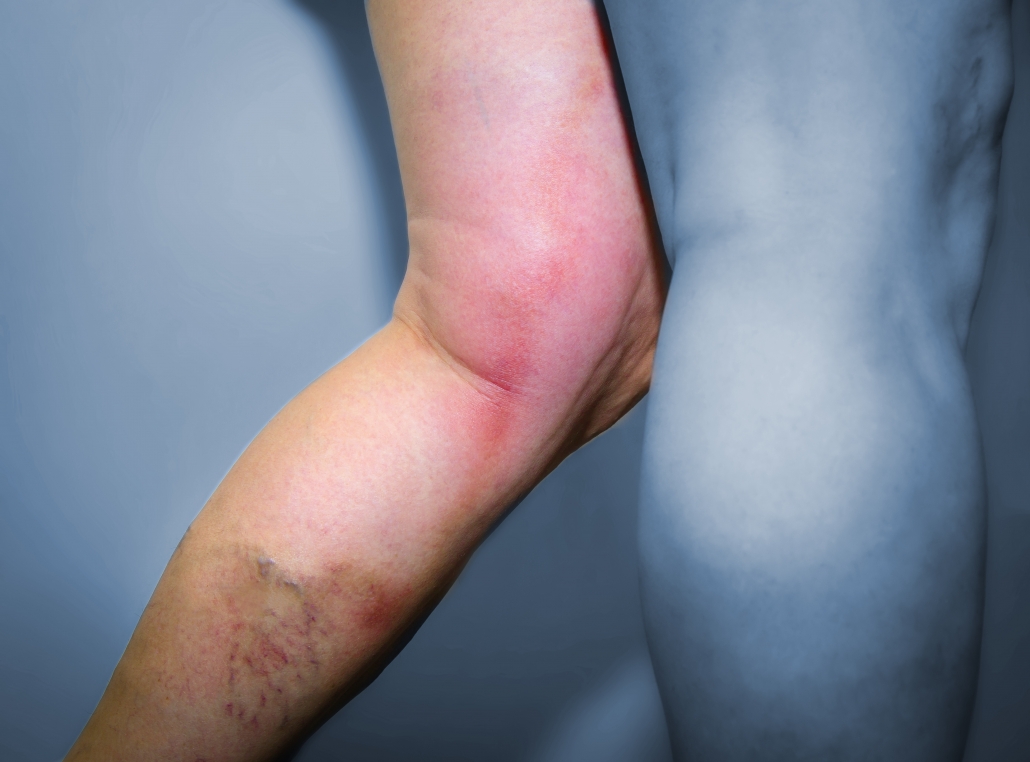Complications of Untreated Varicose Veins #1: Phlebitis
Web@ljvascular.com2021-11-04T15:28:12-07:00What Possible Complications Can Occur From Untreated Varicose Veins?
Over time, complications can develop from untreated veins. These include:
- Superficial phlebitis
A superficial thrombophlebitis (also known as STP) refers to a blood clot that has formed within the vein causing it to become painful and inflamed. The overlying skin becomes red, hot, and painful to touch. The blood clot forms as a complication of varicose veins, because the blood is not circulating well in varicose veins.
- Skin discoloration and eczema around the ankle
- Skin sores or ulcers usually near the ankle
- Burst or hemorrhaged vein
- Chronic venous insufficiency
- Infection of the skin, or cellulitis
This blog post will discuss phlebitis. Phlebitis refers to the painful swelling and inflammation within a vein, usually a varicose vein. A thrombophlebitis is swelling and inflammation of a vein caused by a blood clot. A phlebitis is common with varicose veins, and thrombophlebitis less common but still a potential complication from untreated varicose veins. A thrombophlebitis refers to a blood clot that has formed within the vein causing it to become painful and inflamed. The overlying skin becomes red, hot, and painful to touch.
The blood clot forms because the blood is not circulating well in varicose veins. The blood is stagnant in varicose veins and is more likely to form clots. When blood clots are formed within varicose veins, this is called superficial thrombophlebitis (since varicose veins sit near the skin surface). This is often referred to as an STP.
The following symptoms are often associated with thrombophlebitis:
- Inflammation (swelling) in the part of the body affected
- Pain in the part of the body affected
- skin redness (not always present)
- Warmth and tenderness over the vein
Thrombophlebitis of varicose veins can be avoided by wearing compression stockings daily (prevents pooling of blood), leg elevation, staying active and treating the varicose veins. If you think you have phlebitis, you should see a doctor. An ultrasound examination is may be necessary.



